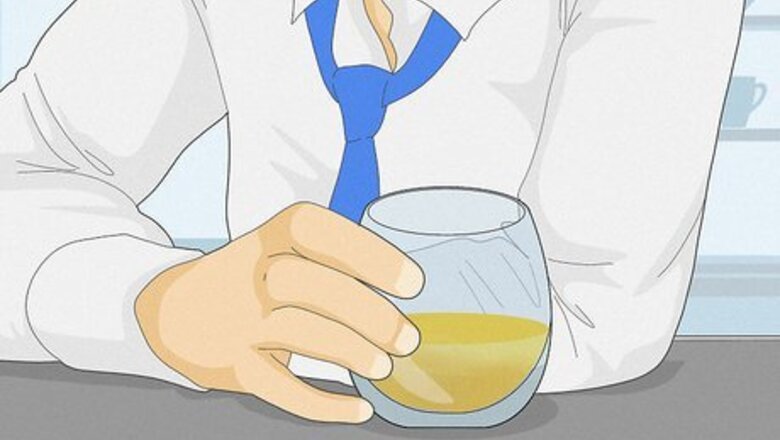
views
- Moderate drinking is defined as 2 drinks or less in a day for men and 1 drink or less per day for women.
- Cut back on drinking by tracking your alcohol usage to identify your triggers, putting a plan in writing, and telling your family and friends about your plans.
- Prescription medications such as naltrexone or acamprosate can help reduce heavy drinking, frequency of drinking, and cravings for alcohol.
What is moderate drinking?
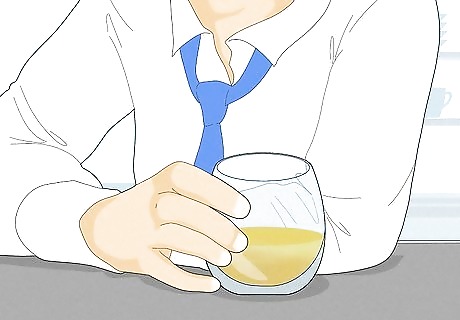
Moderate drinking means limiting alcohol consumption to 1 or 2 drinks. The Centers for Disease Control defines moderate drinking as 2 drinks or less per day for men, 1 drink or less per day for women. It's important to note that this doesn't mean every day—aim to have more days in a week that you don't drink than days that you do. If this sounds like a lot less than you normally drink, you're not alone. Roughly two-thirds of adult drinkers reported drinking more than this at least once a month.
Strategies to Cut Back on Drinking
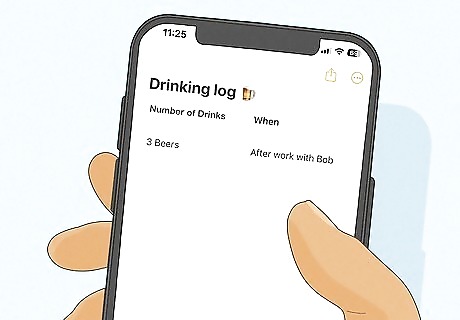
Track your alcohol usage for one week before cutting back. Before you start drinking less, get a good idea of how much you drink, why you drink, and when you drink. Do this by keeping a log and writing down each time you drink, what you drink, and how many drinks you had. Include details about the circumstances, your location, and who was with you. This helps you identify triggers that make you want to drink. A big part of cutting back is avoiding those triggers, but you can't avoid them effectively if you don't know what they are. Go through your log and make a note of commonalities you see. For example, you might notice that you always drink whenever you're with your friend Bob, or that you always drink after fighting with your partner.

Make a specific plan and put it in writing. Choose limits and rules that will work for you, based on your patterns of consumption. Include details about when you will and won't drink as well as what you'll drink. It also helps to write down the reasons that you want to curb your drinking or the benefits you're looking forward to. If you're trying to lose weight, you might count the calories in the specific drinks you consumed and note that by drinking less, you're not consuming those calories. If you're money-motivated, total up the amount of money you spend each month on alcohol. Putting aside the money you don't spend after you cut back can really make you want to drink less!

Let friends and family know about your plan. If you regularly drink with friends and family, they're going to wonder why you aren't drinking as much anyway. Telling them ahead of time that you're planning to cut back can spare you some awkward conversations. Beyond that, you can lean on your friends and family for support when you need it. For example, you might say, "I've been feeling like I drink a little too much and I want to cut back. So I'm only going to drink on Friday or Saturday evenings. When I do drink, I'm not going to have more than 2 beers."
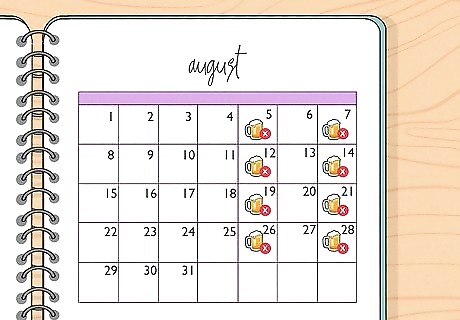
Schedule non-drinking days each week. Get out your calendar and decide on a day or two each week that you'll allow yourself to drink. All the rest of the days are non-drinking days. If cutting back to only a couple of days a week seems like it would be too much for you to handle immediately, start with 3 or 4 days and then cut back again after a couple of weeks. Remember: this doesn't mean that you should drink as much as you want on those drinking days. You're still limiting the amount that you drink as well as the frequency. Some people benefit from taking a couple of weeks to a month completely off from drinking before they start a plan to drink moderately.
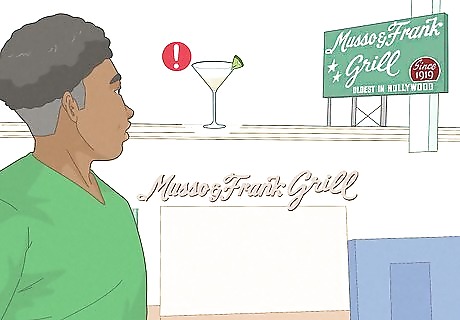
Identify and avoid drinking triggers. Go back to your drinking log and make a list of triggers that make you want to drink. These could be people, places, activities, situations, or even emotions. Cutting back on drinking will be a lot easier for you if you can avoid the majority of these triggers. For example, if you always drink beer when you go to baseball games, you might decide you're not going to go to baseball games for a month. If your drinking is sometimes triggered by things that are out of your control (such as fighting with your partner), find new coping strategies for handling those emotions that don't involve drinking. For example, you might go for a walk.
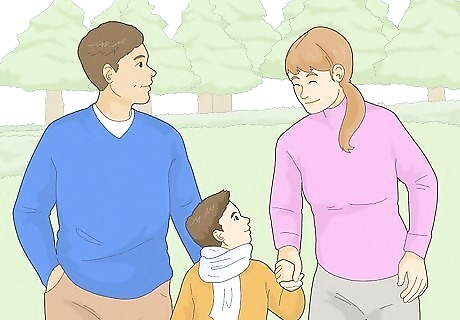
Keep busy with activities that don't revolve around drinking. Now is the perfect opportunity to pick up a new hobby—or get back to an old one that you dropped. Typically, you'll be less inclined to drink if you're always busy doing something else. You might also start hanging out with different people who don't drink as much. For example, you might decide that you're going to go for a walk with your family every evening after dinner instead of having a couple of after-dinner drinks. If your friends typically meet at a bar, you might suggest that you meet up at a café that doesn't serve alcohol instead.
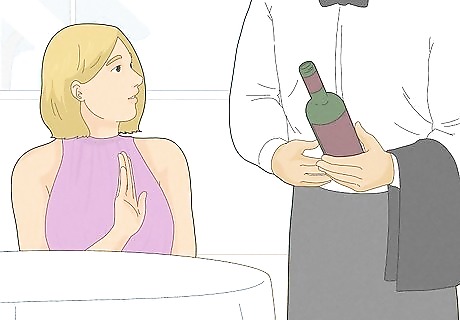
Script your drink refusal and have it ready to go. When you're used to never turning down a drink, it can be hard to suddenly start saying "no." You might feel awkward or weird about it. Having a phrase ready to go will make this easier. Here are some you can try: "Oh, no thanks, I'm good." "I'm actually cutting back, but thanks for the offer." "Thanks, I've had enough for now." "Appreciate it, but I feel better when I don't drink as much."
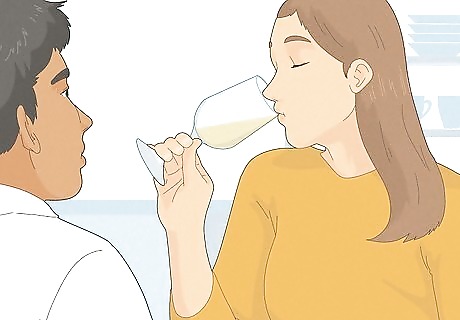
Observe moderate drinkers and adopt their strategies. Do you have friends or family members that seem to have no problem drinking in moderation? Hang out with them and watch what they do. Pay attention to the speed at which they drink, how they interact with other people, and what they say when they're ready to stop drinking. These are things you can do as well! Don't be afraid to talk to people about this as well and find out what works for them. If you have friends who used to drink heavily and successfully cut back, they could be great resources for you.
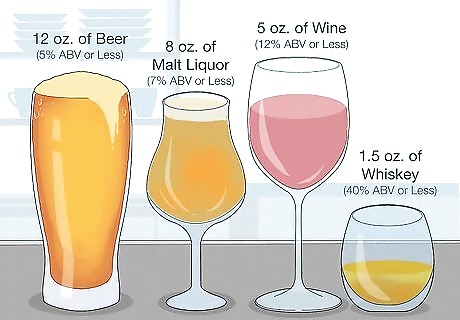
Count your drinks when you are drinking. Having only 1 or 2 drinks sounds simple enough, but what counts as a drink? Filling a pint glass with whiskey doesn't count as a single drink! Refer to these standard drink sizes instead to determine what counts as 1 drink: 12 ounces of beer or cider (5% or less alcohol by volume) 8 ounces of malt liquor (7% or less alcohol by volume) 5 ounces of wine (12% or less alcohol by volume) 1.5 ounces of distilled spirits, such as gin, rum, or whiskey (40% or less alcohol by volume)

Drink smaller, lower-strength drinks more slowly. Go for beers or ciders that have a lower alcohol content when you do drink and sip your drink slowly rather than gulping it down. Another option is to mix a shot with a larger amount of non-alcoholic mixer so that it takes you longer to drink. Avoid drinking more than one alcoholic drink per hour.
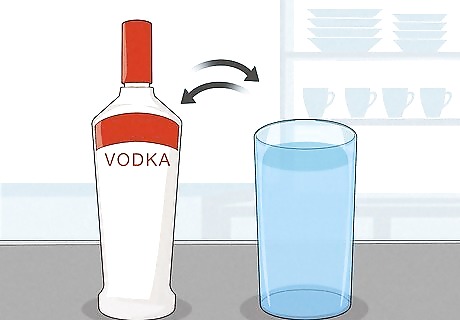
Alternate alcohol with water. Switching back and forth between alcoholic and non-alcoholic drinks enables you to keep drinking while consuming less alcohol. If you feel like you always need to have a drink in your hand when you're out with friends, this is a good way to make sure you're still cutting back on alcohol. Water is a great choice because alcohol has a dehydrating effect. But it doesn't have to be water! For example, you could alternate between a vodka cranberry and a glass of cranberry juice by itself.

Get rid of any alcohol you have at home. This is especially important if you have a problem with drinking at home. But generally speaking, if you have alcohol at home, you're probably going to be tempted to drink it—especially when you're cutting back. Just get rid of the temptation! If you don't have alcohol at home, you won't drink it—simple as that. If you live with other people who drink on a regular basis and aren't cutting back, talk to them about this. Let them know that you don't want to keep alcohol in the house and see if they're willing to get rid of it for at least a short period.
Medications to Curb Drinking

Naltrexone Naltrexone is the preferred choice for people who have been newly diagnosed with a moderate or severe alcohol use disorder. It can be taken while you're still drinking. How it works: Naltrexone blocks the receptor in your brain that makes drinking alcohol feel pleasurable, helping you crave alcohol less Possible side effects: nausea, headache, dizziness Not suitable for: anyone using prescribed opioids for pain management; anyone with liver problems
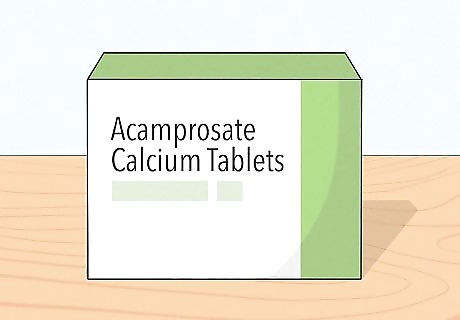
Acamprosate For people who can't take naltrexone due to opioid use or liver problems, acamprosate is the recommended alternative. This drug might also be prescribed to people who tried naltrexone and didn't get any benefit from it. How it works: Acamprosate restores the balance of neurotransmitters in the brain that is altered when you drink alcohol Possible side effects: diarrhea, nervousness, fatigue Not suitable for: anyone with severe kidney dysfunction
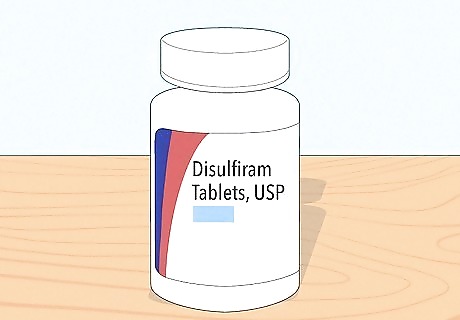
Disulfiram This drug is best used under supervision in an inpatient treatment setting. While it doesn't affect a patient's motivation to drink, it does cause an accumulation of alcohol's primary metabolite in the patient's system, which causes some unpleasant side effects if they continue to drink. How it works: Disulfiram blocks the breakdown of alcohol in the body, leading to a buildup of an alcohol-related compound that makes you very sick if you do drink Possible side effects: (when continuing to consume alcohol) sweating, headache, nausea, vomiting, flushing, heart palpitations; (when not drinking) fatigue, mild drowsiness, headache, rash Not suitable for: anyone with significant heart or cardiovascular problems
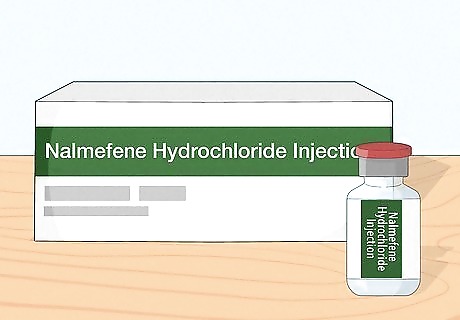
Nalmefene This drug is approved for alcohol use disorder in the European Union and is used in the US to treat opioid overdoses. Research has shown it decreases total alcohol consumption, although studies were small. Nalmefene potentially has advantages over naltrexone, particularly for people with liver problems. How it works: Nalmefene prevents the alcohol-induced release of dopamine, which reduces your desire to drink Possible side effects: nausea, vomiting, stomach pains, muscle or joint pain Not suitable for: anyone who has an allergy to any of the ingredients
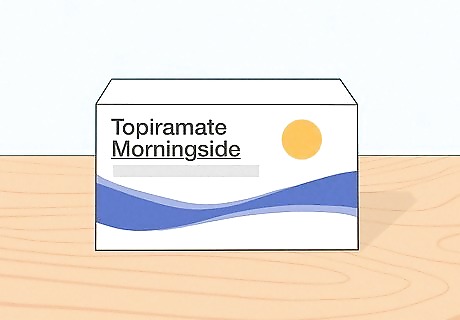
Topiramate Specialists recommend this drug if naltrexone or acamprosate weren't effective. Since it's an anticonvulsant, it's also safer for patients with seizure disorders to use. How it works: Topiramate reduces the release of dopamine when you drink so that you have less of a desire to drink Possible side effects: word-finding difficulties, numbness or tingling, weight loss, fatigue, dizziness, depression Not suitable for: anyone who has an allergy to any of the ingredients

Gabapentin Small studies have shown that gabapentin could be effective at reducing the number of days a patient drinks heavily. Specialists consider it to be a reasonable option for patients who weren't responsive to naltrexone or acamprosate. How it works: Gabapentin calms down the brain to reduce symptoms of anxiety drinkers may experience when they cut back significantly on drinking; restores normal neurotransmitter balance in your brain to decrease your dependency on alcohol Possible side effects: tiredness, dizziness, headache, nausea, vomiting, memory loss, weight gain Not suitable for: people on anti-anxiety medications, prescribed opioids, antidepressants, or antihistamines; people 65 or older or who have a respiratory condition
Benefits of Drinking in Moderation
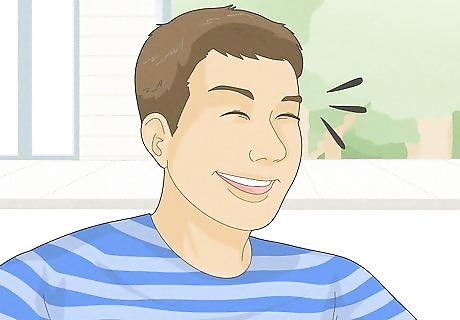
Boosted mood Alcohol is a depressant, which means it definitely makes you feel a little down. Not to mention the fact that hangovers leave you feeling rundown and exhausted, which contributes to your depressed mood. Drinking less helps you feel a little happier and more in control of your life.
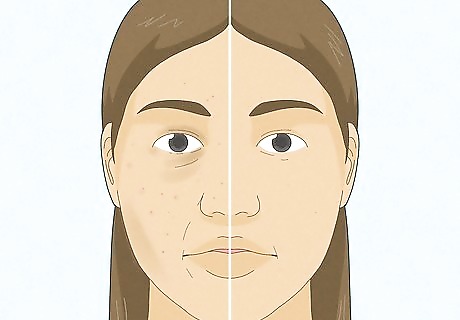
Healthier skin Alcohol's dehydrating effect can wreak havoc on your skin. But once you make an effort to cut back on your drinking, your skin will plump back up again and start to look bright and clear. Swapping out alcoholic beverages with water or juice can help you realize this benefit even more quickly.
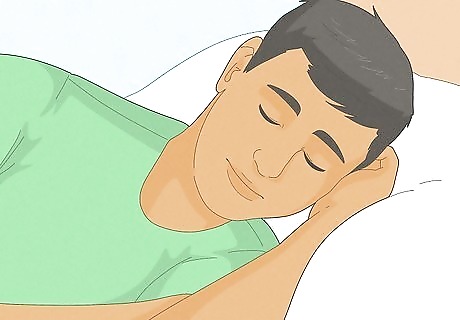
More restful sleep Alcohol disrupts your sleeping patterns and can cause you to wake up during the night or early in the morning. It can also make you take longer to fall asleep and decrease the amount of time you spend in a REM state while you're sleeping. It's the REM state that provides the most recovery for your body, so increasing REM sleep helps you feel more rested in the morning. There's also evidence that excessive alcohol consumption can contribute to the development of sleep disorders, including insomnia, sleep apnea, and restless legs syndrome.
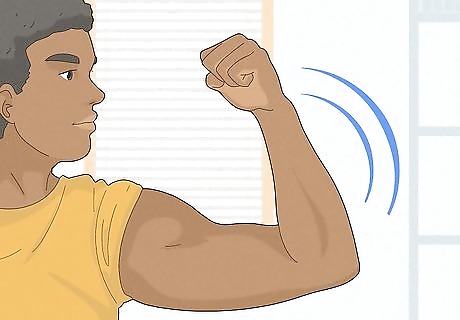
Stronger immune system Regular drinking depresses your immune system and makes it harder for your body to fight off infections. This is part of the reason that heavy drinkers tend to get sick more often. But cutting down on drinking allows your immune system to regain its strength so you feel stronger and healthier.

Better weight management Drinking alcohol means consuming a lot of empty calories that can lead to weight gain. Even if you're not actively trying to lose weight, cutting back on drinking could help you lose a few pounds. Alcohol also has a depressive effect on your body, which encourages your body to store fat. Eliminating that effect will help your body shed some of that unneeded fat.

Better memory Excessive drinking can have a devastating effect on your memory—and this isn't just related to "blackout" events. People who drink to intoxication frequently have difficulty remembering key details about events, even if they remember the event happening generally. The good news is that this damage is reversible if you decrease your alcohol consumption.
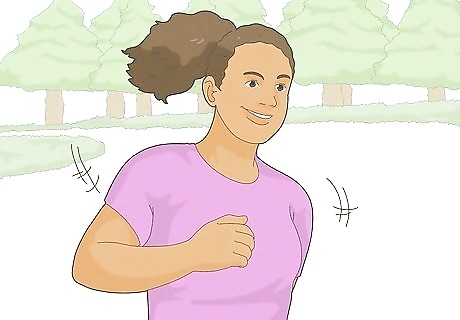
Improved cardiovascular health Heavy drinking damages your heart and can lead to high blood pressure and other cardiovascular problems. Light or moderate drinking, on the other hand, can significantly reduce your risk of heart attack, stroke, and other serious cardiovascular problems. This benefit can be accelerated if, in addition to drinking less, you also start exercising regularly or practicing meditation.



















Comments
0 comment